Hyundai Bayon vs Renault Arkana – Performance, range & efficiency compared
Everyday use, family trips or long-distance drives – here’s where the differences show.
Discover whether Hyundai Bayon or Renault Arkana fits your lifestyle better.
Costs and Efficiency: Price and efficiency are often the first things buyers look at. Here it becomes clear which model has the long-term edge – whether at the pump, the plug, or in purchase price.
Hyundai Bayon has a clearly advantage in terms of price – it starts at 20100 £, while the Renault Arkana costs 28500 £. That’s a price difference of around 8400 £.
Fuel consumption also shows a difference: Renault Arkana manages with 4.70 L and is therefore to a small extent more efficient than the Hyundai Bayon with 5.40 L. The difference is about 0.70 L per 100 km.
Engine and Performance: Power, torque and acceleration say a lot about how a car feels on the road. This is where you see which model delivers more driving dynamics.
When it comes to engine power, the Renault Arkana has a evident edge – offering 143 HP compared to 100 HP. That’s roughly 43 HP more horsepower.
In acceleration from 0 to 100 km/h, the Renault Arkana is barely noticeable quicker – completing the sprint in 10.80 s, while the Hyundai Bayon takes 11.30 s. That’s about 0.50 s faster.
In terms of top speed, the Hyundai Bayon performs barely noticeable better – reaching 179 km/h, while the Renault Arkana tops out at 172 km/h. The difference is around 7 km/h.
There’s also a difference in torque: Renault Arkana pulls hardly perceptible stronger with 205 Nm compared to 200 Nm. That’s about 5 Nm difference.
Space and Everyday Use: Cabin size, boot volume and payload all play a role in everyday practicality. Here, comfort and flexibility make the difference.
Both vehicles offer seating for 5 people.
In curb weight, Hyundai Bayon is clearly perceptible lighter – 1170 kg compared to 1510 kg. The difference is around 340 kg.
In terms of boot space, the Renault Arkana offers a bit more room – 480 L compared to 411 L. That’s a difference of about 69 L.
In maximum load capacity, the Renault Arkana performs minimal better – up to 1263 L, which is about 58 L more than the Hyundai Bayon.
When it comes to payload, Hyundai Bayon minimal takes the win – 465 kg compared to 451 kg. That’s a difference of about 14 kg.
Who wins the race?
The Renault Arkana proves to be leaves the rival little chance and therefore becomes our DriveDuel Champion!
Renault Arkana is the better all-rounder in this comparison.
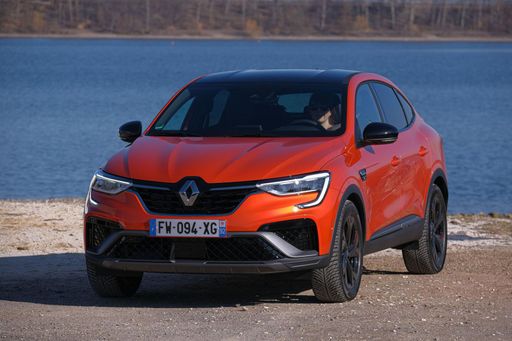
Renault Arkana
Hyundai Bayon
The Hyundai Bayon is a compact crossover that effortlessly merges practicality with modern design. Its sleek exterior and spacious interior make it an ideal choice for urban settings and longer journeys alike. With a focus on comfort and connectivity, this vehicle provides a smooth driving experience paired with advanced technology features.
details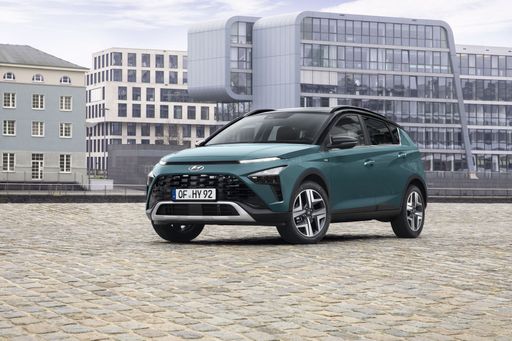 @ hyundai.news
@ hyundai.news
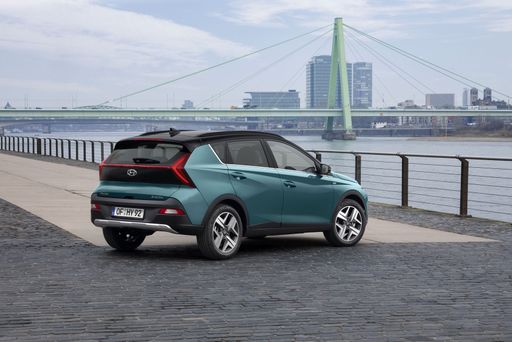 @ hyundai.news
@ hyundai.news
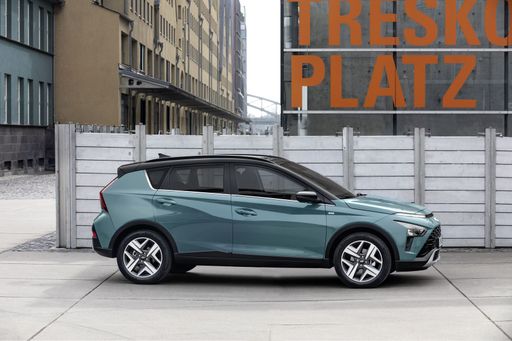 @ hyundai.news
@ hyundai.news
 @ hyundai.news
@ hyundai.news
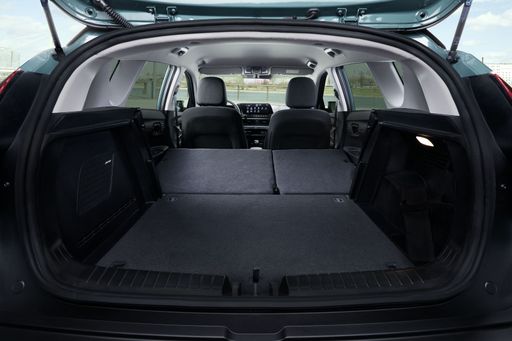 @ hyundai.news
@ hyundai.news
Renault Arkana
The Arkana stands out with its striking coupe-SUV design, blending sporty aesthetics with practicality. Its bold silhouette and high ride height offer a unique presence on the road, attracting attention wherever it goes. Inside, the Arkana combines modern technology with comfort, making it a versatile choice for both city driving and weekend getaways.
details @ Renault
@ Renault
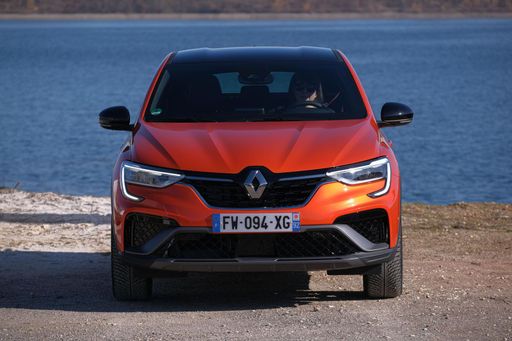 @ Renault
@ Renault
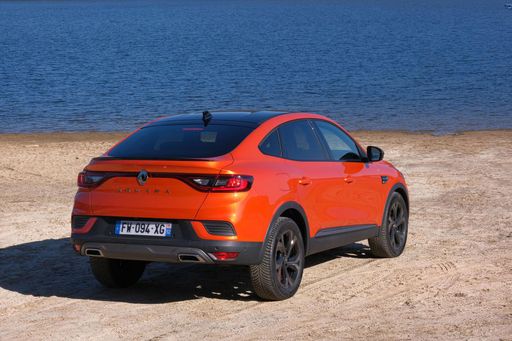 @ Renault
@ Renault
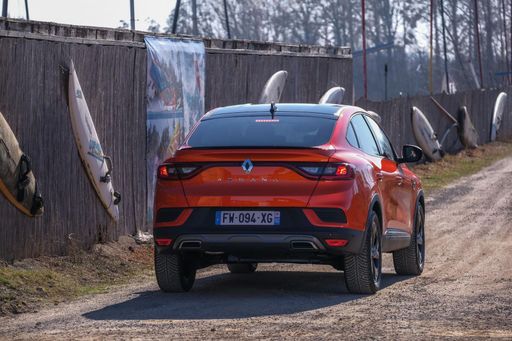 @ Renault
@ Renault
 @ Renault
@ Renault
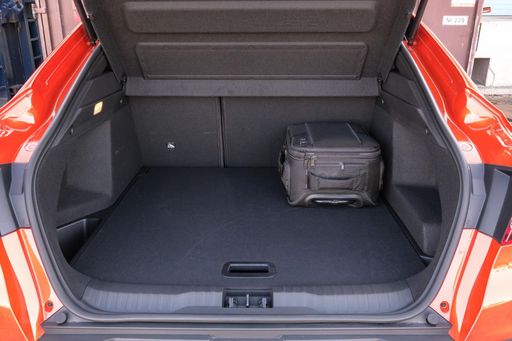 @ Renault
@ Renault

|

|
|
|
|
Costs and Consumption |
|
|---|---|
|
Price
20100 - 25800 £
|
Price
28500 - 31900 £
|
|
Consumption L/100km
5.4 - 5.5 L
|
Consumption L/100km
4.70 L
|
|
Consumption kWh/100km
-
|
Consumption kWh/100km
-
|
|
Electric Range
-
|
Electric Range
-
|
|
Battery Capacity
-
|
Battery Capacity
0.60 kWh
|
|
co2
124 g/km
|
co2
106 g/km
|
|
Fuel tank capacity
40 L
|
Fuel tank capacity
50 L
|
Dimensions and Body |
|
|---|---|
|
Body Type
SUV
|
Body Type
SUV
|
|
Seats
5
|
Seats
5
|
|
Doors
5
|
Doors
5
|
|
Curb weight
1170 - 1195 kg
|
Curb weight
1510 kg
|
|
Trunk capacity
411 L
|
Trunk capacity
480 L
|
|
Length
4180 mm
|
Length
4568 mm
|
|
Width
1775 mm
|
Width
1821 mm
|
|
Height
1500 mm
|
Height
1576 mm
|
|
Max trunk capacity
1205 L
|
Max trunk capacity
1263 L
|
|
Payload
460 - 465 kg
|
Payload
451 kg
|
Engine and Performance |
|
|---|---|
|
Engine Type
Petrol
|
Engine Type
Full Hybrid
|
|
Transmission
Manuel, Automatic
|
Transmission
Automatic
|
|
Transmission Detail
Manual Gearbox, Dual-Clutch Automatic
|
Transmission Detail
Automatic Gearbox
|
|
Drive Type
Front-Wheel Drive
|
Drive Type
Front-Wheel Drive
|
|
Power HP
100 HP
|
Power HP
143 HP
|
|
Acceleration 0-100km/h
11.3 - 12.4 s
|
Acceleration 0-100km/h
10.80 s
|
|
Max Speed
176 - 179 km/h
|
Max Speed
172 km/h
|
|
Torque
172 - 200 Nm
|
Torque
205 Nm
|
|
Number of Cylinders
3
|
Number of Cylinders
4
|
|
Power kW
74 kW
|
Power kW
105 kW
|
|
Engine capacity
998 cm3
|
Engine capacity
1598 cm3
|
General |
|
|---|---|
|
Model Year
2024
|
Model Year
2025
|
|
CO2 Efficiency Class
D
|
CO2 Efficiency Class
C
|
|
Brand
Hyundai
|
Brand
Renault
|
What drivetrain options does the Hyundai Bayon have?
The Hyundai Bayon is available as Front-Wheel Drive.
The prices and data displayed are estimates based on German list prices and may vary by country. This information is not legally binding.
